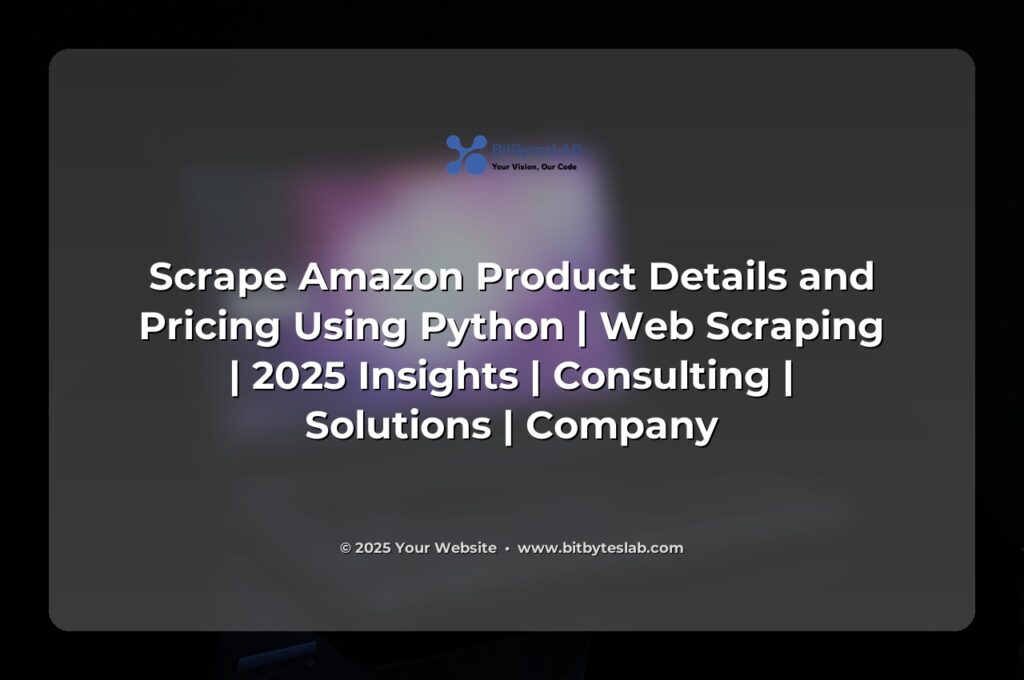Ever wonder how the giants behind Amazon’s bestseller lists keep their eyes on every price shift, every new review, and every hidden gem? In 2025 it’s not just about grabbing a page with a browser—it’s about building a resilient, legally compliant intelligence engine that turns raw HTML into strategic gold. Let’s unfold the playbook that turns those clicks into competitive advantage.
On the surface, “scraping” sounds like a quick, one‑off hack. In reality, the landscape is a jungle of CAPTCHAs, rotating IPs, and ever‑evolving DOMs. For a data‑driven firm, the problem isn’t just collecting numbers; it’s maintaining data quality, staying under the radar, and turning that noise into clean, actionable insights that drive pricing, inventory, and marketing decisions.
Before you even think about a tool stack, you need a foundation of concepts: HTTP & REST give you the handshake; the DOM tells you where to look; JavaScript rendering reveals dynamic content like price tickers; anti‑scraping defenses (rate limits, device fingerprinting, CAPTCHAs) test your resilience; the Amazon Product Advertising API (PA API) offers a legal, stable alternative; and ethics & legal compliance keep you from paying the price of a lawsuit. Layering these concepts into a clear methodology transforms chaos into an orchestrated pipeline.
🚀 Why did the developer go broke? Because he used up all his cache! 💸

With the groundwork set, the next step is crafting a strategy that balances speed, stealth, and data integrity. Start by defining business KPIs—price elasticity, stock velocity, or review sentiment—and map them to data points: ASIN, title, price, availability, rating, review count, and even the “best‑sellers rank” if you’re chasing category insights. Once you know what you want, you can decide whether the PA API’s 200 calls/min or a more aggressive headless‑browser approach fits the cadence of your market intelligence.
Industry data from 2024 shows that companies using API‑first models see a 35 % reduction in maintenance costs compared to traditional scraping, while those who rely on headless browsers benefit from richer, real‑time data—especially on dynamic price boards and flash‑sale banners. The trick? Combine the two: use the PA API for baseline product data, and only invoke a browser for the sweet spots that matter most (e.g., competitor price checks, seasonal bundle listings).
🤖 Why do programmers prefer dark mode? Because light attracts bugs! 🐛

When you’re scraping at scale, performance and resilience go hand in hand. Connection pooling, async I/O, and rotating proxy pools ensure your requests aren’t throttled or banned. For the regulatory side, GDPR and the new EU e‑Privacy Act demand that you keep a meticulous audit trail of every request and that you encrypt any personal data you may capture. Ethical scraping isn’t just a legal nicety—it’s a competitive differentiator that signals trust to partners and customers.
Let’s talk ROI. A well‑architected Amazon data pipeline can unlock a 12–18 % margin lift for retailers by enabling dynamic repricing, inventory optimization, and customer‑centric marketing. For an e‑commerce brand, a single data point—say a price drop on a competitor’s similar ASIN—can trigger a price match that moves the needle in a highly competitive category. In the B2B space, insights into review sentiment help forecast churn and drive proactive support, saving thousands in renewal costs.
Common pitfalls? IP bans happen faster than you can say “rotating proxy.” Cloudflare’s bot detection will flag a headless Chrome in less than 15 seconds if you don’t mimic human mouse movements or random delays. CAPTCHAs can turn a 100‑SKU list into a weekend project if you’re not prepared. And the moment Amazon changes a single CSS class—or worse, an entire data structure—your selectors break, and the pipeline stalls. The antidote is automated selector validation, fallback strategies (regex or API), and a monitoring dashboard that alerts you to any spike in failures.
Looking ahead, 2025 is witnessing the rise of GraphQL endpoints that expose Amazon’s product catalog, AI‑driven extraction models that can parse any page into JSON, and serverless, edge‑based rendering that slashes latency for global customers. Combine these with a robust data lake on S3, automated ETL via Prefect, and analytics in Snowflake, and you’re ready to turn every click into a data‑driven decision.
In sum, the art of Amazon product scraping today is less about pulling data and more about building a disciplined, ethical, and scalable intelligence system. It’s a blend of proven HTTP fundamentals, savvy use of the PA API, stealthy headless browsers, and a data pipeline that respects privacy while delivering real business value. And if you need a partner who’s already built this architecture for Fortune 500 brands, BitBytesLab is the go‑to web‑scraping and data‑scraping service provider that turns curiosity into competitive advantage.





